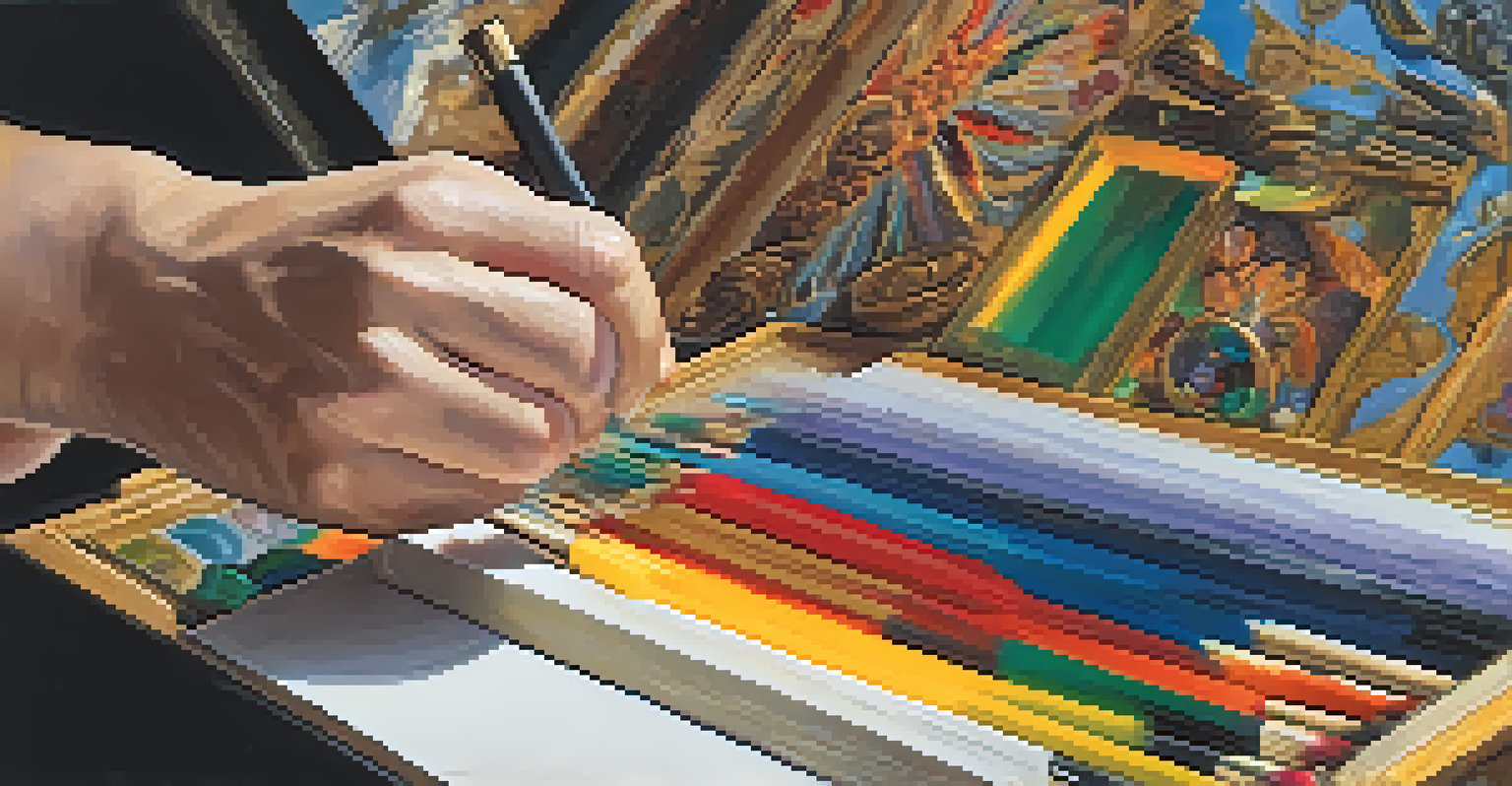Art Forgery: The Ethical Impact on Artists and Collectors

Understanding Art Forgery and Its Impact
Art forgery has a long and storied history, often tied to the allure of high-value pieces. For many, the idea of owning a famous artwork is enticing, but when forgeries enter the picture, the integrity of the art world is called into question. This not only affects the market value of genuine pieces but also challenges the authenticity of artists' legacies.
The greatest threat to art is the absence of authenticity.
Collectors who unknowingly purchase forgeries can face significant financial losses, not to mention the emotional toll of realizing their prized possession is a fake. This situation can lead to a deep sense of betrayal, as trust is a fundamental aspect of the art community. Moreover, the presence of forgeries raises questions about the criteria used to authenticate art, making it a complex issue for everyone involved.
As we delve deeper, it's crucial to consider how art forgery affects not only the monetary value of artworks but also the ethical implications for artists and collectors alike. Ultimately, understanding the nuances of this issue is vital for anyone who appreciates art.
The Artist's Perspective on Forgery
For artists, forgery can be a devastating blow to their reputation and livelihood. When someone replicates their work without permission, it undermines their creative efforts and the unique voice they bring to the art world. This violation can lead to feelings of frustration and helplessness, as artists strive to maintain their integrity amidst a sea of imitations.

Moreover, forgeries can dilute the value of an artist's original pieces. If collectors are uncertain about the authenticity of a work, they may hesitate to invest, impacting the artist's marketability and financial stability. This uncertainty can create a ripple effect, stunting an artist's growth and recognition in a competitive field.
Art Forgery Affects Market Integrity
The presence of forgeries undermines the authenticity of genuine artworks and the trust within the art community.
In this sense, art forgery becomes more than just a financial issue; it's a moral one. Artists deserve the right to see their work appreciated and valued for its originality, and forgeries challenge this fundamental principle.
Collectors: Navigating the Risk of Forgery
Collectors are often caught in a difficult position when navigating the art market, especially with the risk of acquiring forgeries. The excitement of purchasing a new piece can quickly turn to dismay if it turns out to be a fake. This is particularly true for new collectors who may not have the expertise to discern the signs of a forgery.
Art is the most beautiful of all lies; it can convince us of authenticity when we know it’s a forgery.
In addition to financial loss, collectors face the potential embarrassment of having to explain their purchase to friends or fellow enthusiasts. This social stigma can discourage them from engaging with the art community, leading to a sense of isolation. As a result, the experience of collecting art, which should be joyous, can become fraught with anxiety and doubt.
To mitigate these risks, collectors must invest time in research and seek reputable dealers and experts. Building a network of trusted advisors can help ensure that their investments are sound and that they are supporting authentic artists.
The Role of Technology in Combating Forgery
As technology advances, so does the ability to combat art forgery. Tools like blockchain and digital authentication methods are being implemented to create verifiable records of ownership and provenance. This means that collectors can have greater confidence in the authenticity of their purchases, ultimately preserving the integrity of the art market.
Additionally, technologies such as artificial intelligence are being developed to analyze artworks for inconsistencies that may indicate forgery. These innovations provide a new layer of protection for both artists and collectors, making it more challenging for forgers to succeed. However, as technology evolves, so too do the tactics of those looking to deceive.
Artists Suffer from Imitation
Forgeries can damage artists' reputations and dilute the value of their original works, impacting their marketability.
While technology is a valuable ally in this battle, it's essential for everyone involved in the art world to remain vigilant and informed. By embracing both traditional methods and modern tools, we can work together to minimize the impact of forgery.
Legal Consequences of Art Forgery
Art forgery is not just an ethical issue; it also has significant legal ramifications. Those caught creating or selling forgeries can face severe penalties, including hefty fines and even imprisonment. This legal framework serves as a deterrent, aiming to protect both artists and collectors from fraudulent activities.
However, pursuing legal action can be a complex and lengthy process. Collectors may find themselves entangled in lawsuits that require extensive evidence and expert testimony. This can be both emotionally and financially draining, often leaving them questioning whether the effort is worth the potential outcome.
Ultimately, while the law provides a framework for addressing forgery, the best defense lies in prevention. By fostering a culture of awareness and education, we can help minimize the risks associated with art forgery.
Ethical Considerations in the Art Market
The ethical considerations surrounding art forgery extend beyond the direct victims of fraud. They also encompass the broader implications for the art community and society at large. When forgeries proliferate, they can distort the perceived value of art and challenge the principles of authenticity and originality that underpin artistic expression.
Artists deserve recognition for their unique contributions, and forgeries undermine this fundamental right. Moreover, when collectors unknowingly support forgers, they inadvertently contribute to a cycle that devalues genuine art. This creates a moral dilemma, as the art market becomes entangled in a web of deception.
Technology Aids in Preventing Forgery
Advancements like blockchain and AI are being utilized to enhance authentication processes and protect against art forgery.
To foster a more ethical art environment, all stakeholders must commit to transparency and integrity. By prioritizing education and awareness, we can collectively raise the standards of the art world and create a more supportive space for artists and collectors alike.
The Future of Art Forgery: Challenges and Opportunities
As we look to the future, the challenges of art forgery are likely to persist. The continuous evolution of technology and the art market means that forgers will adapt their techniques to exploit any vulnerabilities. This ongoing battle will require constant vigilance from artists, collectors, and institutions alike to protect the integrity of the art world.
However, with challenges come opportunities for growth and improvement. The art community can leverage technological advancements to enhance authentication processes and create more robust systems for verifying artworks. By collaborating across sectors, we can develop innovative solutions to combat forgery effectively.

Ultimately, the future of art forgery will depend on our collective commitment to uphold ethical standards and support genuine artistic expression. By fostering a culture of integrity, we can ensure that the art world remains vibrant and authentic.